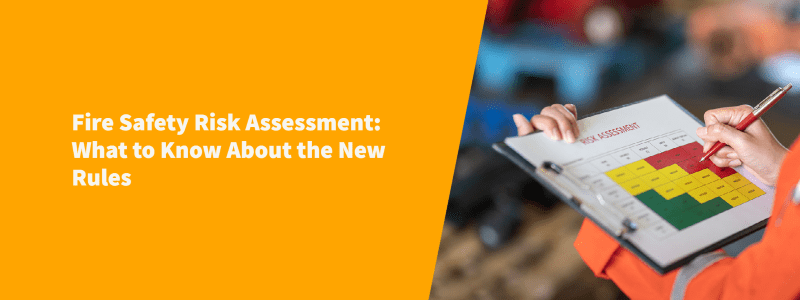When it comes to health and safety at work, fire safety is a big part of keeping people safe. It isn’t just about stopping fires, but avoiding them happening in the first place. And it’s here where your fire safety risk assessment comes into it. This level of preparedness is set out in the Fire Safety Act 2021, a piece of legislation that was accelerated by the Grenfell Tower tragedy in 2017. The new Fire Safety Act was adopted directly from the Regulatory Reform (Fire Safety) Order 2005, with both pieces of legislation complimenting each other.
The newer Fire Safety Act isn’t the last improvement to be made in this realm, with the latest new guidance coming into force in October 2023, with the improved provisions of the Building Safety Act 2022, that are largely based on responsibility and transparency around fire safety. This new act will build upon the previous phases of the government’s legislation strengthening exercise. Below we talk you through all you need to know.
What is the Regulatory Reform (Fire Safety) Order 2005?
The Regulatory Reform (Fire Safety) Order 2005 is the piece of legislation that determines what standards must be adhered to in relation to keeping visitors, employees and communities safe from the risk of a fire. This law placed the onus of responsibility on individuals within a business/organisation setting. It’s right to note that this doesn’t apply to domestic properties/individual family homes.
How Has Legislation Changed?
The Regulatory Reform Order was brought about to help give more clarity on fire safety. But as with all legislation, things change, and improvements have been made to the legislation. One of the main catalysts for change in fire legislation is the Grenfell Tower disaster. This brought the focus on both multi-occupancy residence and other buildings. The newly brought about Building Safety Act 2022 “strengthens fire safety in all FSO (Fire Safety Order) regulated premises…”, allowing for greater fire security in non-domestic properties. These rules come in to force in October 2023 and will require a sterner examination from business leaders and responsible persons.
What do These Changes Mean to Me?
In one way, these changes shouldn’t make huge differences to what you are already doing. You should already be ensuring your building is appropriately risk assessed, but this change will ensure that fire safety becomes a more collaborative and transparent process.
Firstly, the way documentation is recorded will change slightly. There will now be “more cooperation and coordination between responsible persons” when it comes to historical records in each building. This will be required for the lifespan of a building, and will allow occupants to understand the histories of fire safety in the building.
Next, these changes will make it easier for authorities to take action for non-compliance. This will presumably link in with the above information regarding historical information, but also allow authorities to ensure a tight hold is kept on fire safety.
If you are uncertain about this process, or are currently not recording your fire safety assessments, we advise you to hire a business that can do this for you.
A Fire Safety Risk Assessment Check List
There are a number of things that the legislation advises you to take into account when doing a fire safety assessment. These can be seen below:
- Identify the Fire Hazards
- Identify the People at Risk
- Evaluate Findings and Act
- Record, Plan and Train
- Review Your Processes
Not all business can afford the time to do their own fire risk assessment. Human or financial resources can hold many back with their risk assessment and health and safety measures. But that’s where Direct365 can support you.
We understand that running a small business is difficult and a minefield of legislation. We can take that problem away from you with our fire risk assessment service. Allow us to take care of your safety with a thorough service that is great value for money.
For further details, fill out our form below.

